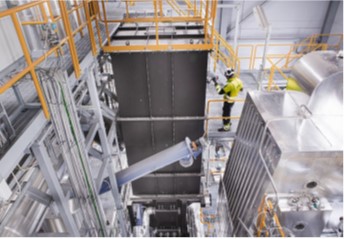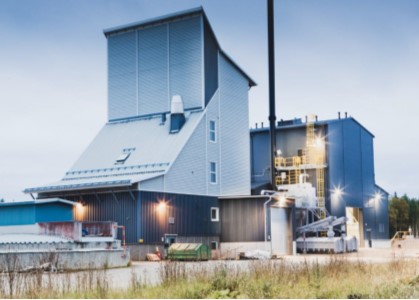Process & contact
Input materials
Dewatered sewage sludge or dewatered sludge digestate.
Output products
Ash with low contaminant levels which can be used as fertiliser. Organic contaminants in sewage sludge are eliminated.
The phosphorus content (as P) is 6% but subject to improvement measures at WWTP level. Of this P, about 70% is plant available (NAC) depending on the iron content of the ash.
Typical heavy metal content (mg/kg DM): arsenic (As) 7; cadmium (Cd) 1.1; chromium (Cr) 170; copper (Cu) 400; mercury (Hg) <0.04; nickel (Ni) 97; lead (Pb) 15; zinc (Zn) 870.
Ammonium sulfate solution, 25%.
Secondary energy for e.g. district heating network: approx. 1 MWh heat per ton sludge treated.
Process description
Dewatered sludge is thermally dried to 95% DM, using secondary energy from the PAKU reactor (heat is transferred using hot sand).
The dryer condensate undergoes nitrogen recovery (ammonia stripping) and energy recovery.
The dried sludge is then incinerated at 850°C in the PAKU reactor, without need for additional fuel input in operation.
Ash from the incineration step is separated into a fertiliser fraction and a small fraction (approx. 5% of ash production) which goes to landfill.
Operating status
Full scale plant operating since early 2021 at Rovaniemi sewage treatment works, Finland (NEVE project), capacity 10kt/y sludge (25% DM) = sludge for 50 000 p.e.
